ASUS ROG Rampage Formula: Why we were wrong about the Intel X48
by Kris Boughton on January 25, 2008 4:30 AM EST- Posted in
- Motherboards
BIOS Screenshots and Interesting Settings
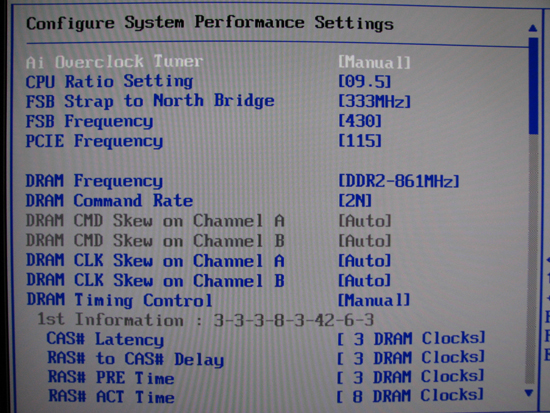
ASUS boards are known for their high level of customization and the Rampage Formula is no exception. The main menu that provides a majority of the options normally associated with overclocking is renamed "Extreme Tweaker", which we feel is entirely appropriate. Users can adjust everything from here, from bus speeds to voltages and memory timings to MCH parameters. Although a few options with indeterminate purposes still exist (for example, "Ai Clock Twister"), for the most part ASUS has done an excellent job in clearly labeling what each setting does.

The ASUS Rampage Formula comes with official FSB1600 support, a feature attached to the use of the upcoming X48 chipset release. Those that want to use the next Intel Core 2 Extreme, the QX9770, will need to buy a board built around X48 if they want a platform validated for 400MHz FSB operation. We found the Rampage required no additional MCH voltage when running at this FSB setting.
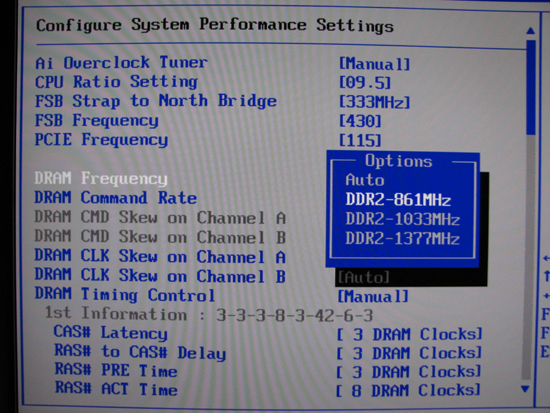
The standard compliment of DDR2 dividers is included in the Rampage Formula's BIOS. We will go into more detail about these later in the review. In any case, even with the fastest DDR2 available, we are not left wanting when it comes to options for pushing our memory.
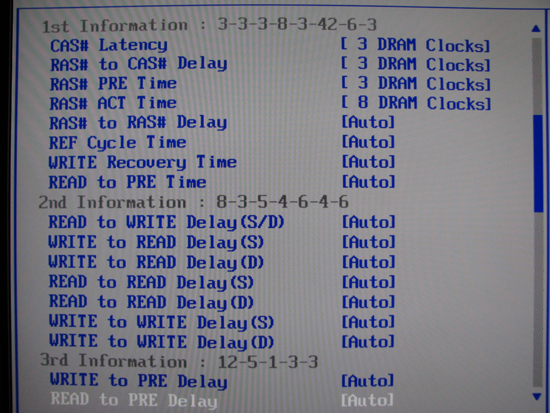
The BIOS includes adjustment options for all primary memory timings - 20 in all. Most of the time a majority of these can be set to "Auto" - ASUS' tuning is already quite good. However, experienced users and memory experts alike will enjoy the expansive level of control allowed.

Here we can get a good look at what we consider the most significant change to the standard ASUS BIOS offering in years. "Common Performance Level", more correctly known as MCH Read Delay (tRD), allows the user to specifically establish a desired value, something that was not entirely possible in the past. Earlier versions of "Ai Transaction Booster" only allowed the user to apply an offset, which made controlling tRD difficult when the base value was unknown.
Additionally, each FSB bus cycle "phase" for each channel can be further manipulated. "CHA" and "CHB" refer to the two independent memory channels in a dual-channel memory configuration. Installing only one memory DIMM, or certain combinations of mismatched memory module pairings across all four expansion slots, results in the motherboard defaulting to single-channel operation; otherwise there are two memory channels in operation, which enhances overall system performance. The number of phases per channel depends on the memory divider in use (each channel will always have the same number of channels though) - a 3:2 memory divider has two phases, 4:3 has three, and 8:5 has five, for example. We will explore the theory behind this truth shortly.
Setting a single channel/phase "Pull-In" to enabled has the effect of lowering that particular phase's associated tRD value to one below the Common Performance Level (the "base" tRD). Leaving the setting disabled leaves the phase unadjusted, in which case it is the same as the base tRD. Much like memory timings, lower tRD values bring greater performance. As we will see, these settings primarily allow users to squeeze out any unclaimed performance benefit possible with the current tRD when the next "lower" Common Performance Level is unachievable. Do not feel as though you need to understand what all of this means right now, as we will cover all of this and much more in excruciating detail soon enough.
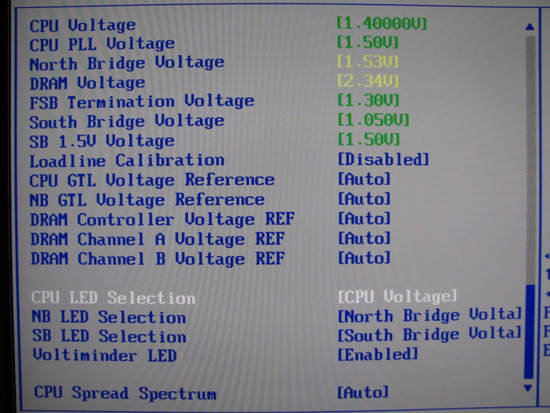
With no less than seven onboard voltage adjustments, the Rampage Formula is a tweaker's dream come true. Because ASUS motherboards do make a habit of "adjusting" some of these values automatically at times, we recommend you manually set all voltages to the bottom of their ranges unless otherwise required. This best practice just makes good sense and ensures nothing receives more voltage than intended by the user. Again, we must also strongly caution against the use of "Loadline Calibration." We recommend you leave this option disabled, especially when installing a 45nm CPU.
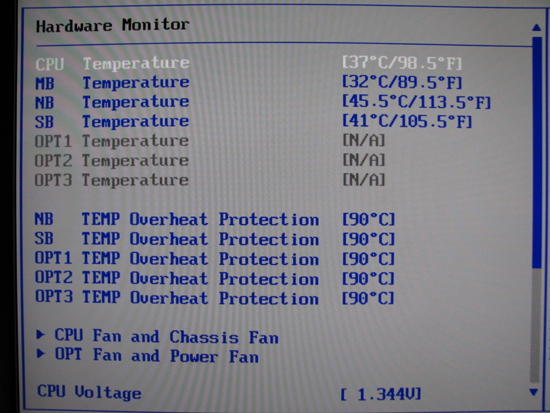

ASUS' implementation of their in-BIOS hardware monitor is extremely informative. You can simultaneously check temperatures for the CPU, motherboard (PWM), Northbridge (NB), and Southbridge (SB) as well as quickly review the effect that prior voltage adjustments had on actual voltage levels. Although we found most reported voltages were fairly accurate, obtaining the most precise readings possible still requires the use of a digital multimeter (DMM).
Regarding voltages, we found two concerns worth mentioning. Firstly, the reported CPU PLL voltage appears to be non-functional as it always reads the same, regardless of setting. Second, like many other ASUS offerings the motherboard consistently overvolts the memory by 0.08 ~ 0.10V. We do not see any real problem with this, as long as the user is aware it's happening.










73 Comments
View All Comments
kjboughton - Sunday, January 27, 2008 - link
The rules as defined may not apply exactly as provided for P35. The equations have been tested to be true for X38/X48 but additional testing is still needed on P35 in order to validate the results.Super Nade - Saturday, January 26, 2008 - link
Hi,I love the technical depth of the article. Outstanding writeup! I hope you will NOT dumb down future articles as this is how, IMO a review should be written.
S-N
Eric Rekut - Saturday, January 26, 2008 - link
Great article! I have a question, is x48 faster in super-pi than p35/x38?Rajinder Gill - Saturday, January 26, 2008 - link
Hi,In general the X38/X48 chipset outscores the P35 in Super Pi. The x48 can/will pull ahead of the X38 very marginally IF it can handle a lower overall tRD with a higher FSB combination and tighter memory sub-timing ranges - within an available level of Northbridge voltage.
regards
Raja
Rob94hawk - Saturday, January 26, 2008 - link
I would love to see you guys do benchmarking and overclocking with the QX9770+DDR3 1800 with this mobo.Rajinder Gill - Saturday, January 26, 2008 - link
Hi Rob,Kris will be testing the Rampage Extreme soon (with DDR3). The 9770's only show a little more prowess than QX9650's under LN2 cooling (in some instances - not always). With cascade/water/air cooling there's little to separate the QX9650 from the QX9770 (at least in my experience with both processors thus far).
regards
Raja
enigma1997 - Saturday, January 26, 2008 - link
Another excellent article after the QX9650 O/C one. Congratulations!!I have a few questions: What ram did you use to achieve the amazingly high bandwidth result (the one that goes with the 450FSB and tRD 5)? I understand you are using a divider of 3:2 and CAS5, so I expect the DDR2 speed should be at 10800!!
Also, I am not sure how you can get a memory read of >9000MB/s with tRD 5. I have a pair of G.Skill F2-8000PHU2-2GBHZ 4-4-4-5 and a DFI X38-T2R motherboard. I set it up with a QX9650 with tRD/FSB/ram timing identical to yours, but I only get around 8800MB/s. Note that the CPU runs at 3000Mhz.
Thanks for the article and your answers to my questions :)
kjboughton - Sunday, January 27, 2008 - link
Memory used for the incredible 450FSB/tRD 5 result was OCZ DDR2 PC-9200 Reaper (2GB kit).Regarding the testing you did at equivalent speeds, contrary to popular belief, CPU speed does influence both system memory read latency and bandwidth (add 16 clocks of whatever the CPU's Tcycle is to total system latency - about an extra 1.33ns going from 4GHz, where I tested, down to 3GHz uses in your system). This is certainly enough to reduce your BW results down below 9GB/s.
Jodiuh - Saturday, January 26, 2008 - link
"we feel there is nothing that needs modification by the end user as long as overclocking aspirations are within reason."The current Maximus series requires a bit of work (heatgun, fridge) to pull this off and replace with TIM of choice. Also I noticed a 7C drop on the bench when adding a 5CFM 40mm to the NB. Would you mind fleshing out the comment a bit more?
Thanks for the very thorough information in the article!
jedisoulfly - Friday, January 25, 2008 - link
there is a patriot viper ddr3 1600 cl7 kit at newegg for $295 (out of stock at time of this post) that is dramatically higher than good 800 ddr2 or even 1066 but just over a year ago ddr2 800 2gb kits were going for that price. I think once NV and AMD start making chip sets that support ddr3 the prices will start to come down...hopefully